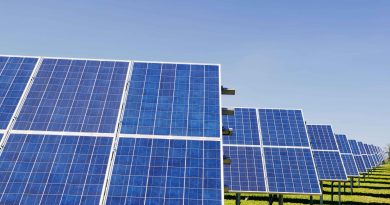Do I Need Planning Permission For Solar Panels?
Installing solar panels is a significant step toward sustainability, but before you can start harnessing solar energy, it’s crucial to understand the planning permission requirements. Whether you need permission depends on various factors, including property type, location, and system size. This guide will help you navigate the planning permission process, explore permitted development rights, and offer tips for ensuring a smooth application experience.
Table of Contents
- 0.1 1. Factors Influencing the Need for Planning Permission
- 0.2 2. The Process of Obtaining Planning Permission
- 0.3 3. Permitted Development Rights and Their Limitations
- 0.4 4. Common Reasons for Planning Permission Rejection
- 0.5 5. Appealing a Planning Permission Decision
- 0.6 6. The Impact of Planning Permission on Solar Panel Installation Costs
- 0.7 7. Government Policies and Incentives Related to Planning Permission
- 0.8 8. Case Studies of Successful Planning Permission Applications
- 0.9 9. Tips for Ensuring a Smooth Planning Permission Process
- 1 FAQs About Planning Permission for Solar Panel Installation
- 2 Table: Key Considerations for Planning Permission in Solar Panel Installation
1. Factors Influencing the Need for Planning Permission
Planning permission for solar panel installation is influenced by several factors:
- Property Type: The type of property (residential, commercial, historical, etc.) significantly impacts whether planning permission is required. Listed buildings, properties in conservation areas, or those with special architectural significance may have stricter requirements.
- Location: Geographic location can play a role, especially in areas designated as national parks, conservation areas, or world heritage sites, where visual impact is a concern.
- System Size and Placement: The size of the solar panel system and where it will be placed (roof-mounted, ground-mounted) can determine the need for permission. Larger systems or those that significantly alter the property’s appearance are more likely to require approval.
- Local Regulations: Local planning authorities may have specific guidelines that differ from national standards, necessitating permission based on local considerations.
2. The Process of Obtaining Planning Permission
The process of obtaining planning permission involves several key steps:
- Research Local Requirements: Start by checking with your local planning authority (LPA) to understand the specific requirements and whether planning permission is necessary for your project.
- Prepare Documentation: Gather all necessary documentation, including detailed plans of the proposed solar installation, its dimensions, location on the property, and the potential visual and environmental impact.
- Submit Application: Submit your planning application to the LPA. This typically includes an application form, site plans, and any required fees.
- Await Decision: The LPA will review your application, which may involve consultations with neighbors or other stakeholders. This process can take several weeks to months, depending on the complexity of the project.
- Address Conditions: If the permission is granted with conditions, ensure you understand and fulfill them before proceeding with the installation.
3. Permitted Development Rights and Their Limitations
Permitted Development Rights (PDR) allow homeowners to carry out certain types of work without needing to apply for planning permission. However, these rights have limitations:
- Roof-Mounted Systems: Most domestic solar panel installations on residential properties fall under PDR, provided they meet specific criteria, such as not protruding more than 200mm beyond the roof plane and not exceeding the highest part of the roof (excluding chimneys).
- Ground-Mounted Systems: For ground-mounted systems, PDR generally applies if the system is within the property’s curtilage, does not exceed 9 square meters, and is not taller than 4 meters.
- Limitations: PDR does not apply to listed buildings, properties in conservation areas, or sites of special scientific interest (SSSI). Additionally, the cumulative impact of multiple installations may require planning permission.
4. Common Reasons for Planning Permission Rejection
Planning permission can be denied for various reasons:
- Visual Impact: If the installation is deemed to have an unacceptable visual impact, especially in scenic or protected areas, permission may be denied.
- Impact on Heritage Sites: For listed buildings or properties in conservation areas, the potential impact on the building’s character and appearance can lead to rejection.
- Size and Scale: Large or obtrusive installations that significantly alter the property’s appearance are more likely to be rejected.
- Neighbor Objections: If neighbors raise valid concerns about overshadowing, glare, or visual impact, these objections may influence the decision.
5. Appealing a Planning Permission Decision
If your planning application is denied, you have the right to appeal:
- Understand the Reasons: Carefully review the reasons for the rejection provided by the LPA. Addressing these concerns is crucial in preparing a successful appeal.
- Submit an Appeal: Appeals must be submitted within a specific timeframe (usually within six months of the decision). Provide additional evidence or revisions to the initial plan to address the concerns raised.
- Seek Professional Advice: Consulting a planning expert or solicitor can improve the chances of a successful appeal, especially in complex cases.
6. The Impact of Planning Permission on Solar Panel Installation Costs
Obtaining planning permission can impact the overall cost of your solar panel installation:
- Application Fees: Depending on the local authority, fees for submitting a planning application can range from modest to significant, especially for larger projects.
- Consultation and Professional Fees: Engaging planning consultants, architects, or legal advisors to assist with the application or appeal process can add to the costs.
- Delays: Delays in obtaining permission can lead to increased project costs, especially if market conditions change or if you miss out on time-sensitive incentives.
7. Government Policies and Incentives Related to Planning Permission
Government policies can influence planning permission requirements and offer incentives:
- Renewable Energy Targets: Many governments have set renewable energy targets, encouraging the adoption of solar power. This can lead to more favorable planning conditions or expedited approvals for solar projects.
- Incentives: Financial incentives, such as tax credits, grants, or feed-in tariffs, may be available to offset the costs of planning and installation. Some incentives are contingent on the project receiving planning permission.
- Streamlined Processes: In some regions, governments have introduced streamlined planning processes for renewable energy projects, reducing the bureaucratic burden.
8. Case Studies of Successful Planning Permission Applications
- Urban Residential Installation: A homeowner in a conservation area successfully obtained planning permission for a discreet roof-mounted solar installation by demonstrating minimal visual impact and providing thorough documentation of the installation’s benefits.
- Commercial Solar Farm: A large-scale solar farm on agricultural land received planning permission after the developers worked closely with the local community, addressing concerns about visual impact and proposing a landscape plan to screen the installation.
- Rural Property with Heritage Considerations: A solar installation on a listed building was approved after the owners proposed an innovative design that preserved the building’s character and included a detailed heritage impact assessment.
9. Tips for Ensuring a Smooth Planning Permission Process
- Early Consultation: Engage with the LPA early in the planning process to understand requirements and potential issues.
- Detailed Documentation: Provide thorough and clear documentation, including plans, environmental impact assessments, and visual simulations.
- Community Engagement: If your project is likely to impact neighbors or the community, engage with them early to address concerns and build support.
- Professional Guidance: Consider hiring a planning consultant, especially for complex projects or in sensitive locations.
FAQs About Planning Permission for Solar Panel Installation
Q1: Do I need planning permission to install solar panels on my home?
A1: In many cases, planning permission is not required due to Permitted Development Rights, but this depends on factors such as property type, location, and system size.
Q2: What happens if my planning application is denied?
A2: If your application is denied, you can appeal the decision. It’s important to address the reasons for rejection in your appeal.
Q3: Are there any specific rules for installing solar panels in conservation areas?
A3: Yes, installations in conservation areas or on listed buildings often require planning permission, and the requirements are typically stricter to preserve the area’s character.
Q4: How long does the planning permission process take?
A4: The process can take anywhere from a few weeks to several months, depending on the complexity of the project and the workload of the LPA.
Q5: Can planning permission affect the cost of my solar panel installation?
A5: Yes, obtaining planning permission can increase costs due to application fees, potential delays, and the need for professional advice.
Q6: What are Permitted Development Rights, and how do they apply to solar panels?
A6: Permitted Development Rights allow certain types of work, like small solar installations, to proceed without planning permission, provided they meet specific criteria.
Q7: What are common reasons for planning permission rejection?
A7: Common reasons include visual impact, effect on heritage sites, size and scale of the installation, and objections from neighbors.
Q8: How can I improve my chances of getting planning permission?
A8: Improve your chances by providing detailed documentation, engaging with the community, consulting early with the LPA, and addressing any potential concerns upfront.
Table: Key Considerations for Planning Permission in Solar Panel Installation
| Consideration | Description |
|---|---|
| Property Type | Different rules apply for residential, commercial, listed buildings, and properties in conservation areas. |
| Location | Proximity to national parks, conservation areas, and heritage sites may necessitate planning permission. |
| System Size and Placement | Larger systems or ground-mounted installations are more likely to require permission. |
| Local Regulations | Local planning authorities may have specific guidelines beyond national standards. |
| Permitted Development Rights (PDR) | PDR allows certain installations without permission, but limitations apply based on property and location. |
| Planning Process Duration | The duration can vary, with standard applications taking several weeks to months. |
| Common Rejection Reasons | Visual impact, effect on heritage sites, and neighbor objections are common reasons for rejection. |
| Cost Implications | Planning permission can increase costs due to fees, delays, and the need for professional |


